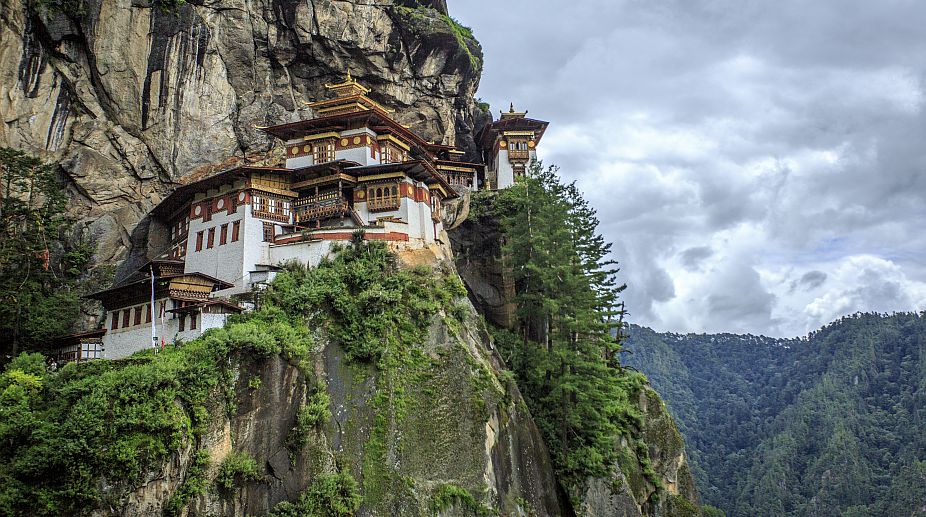Security beefed up at Digha beach
Security at Digha sea beach had been stepped up following an inflow of tourists for the last few days to avert any untoward incident.

(PHOTO: Getty Images)
Bhutan, India and Nepal are exploring ways to enhance cooperation in strengthening potentials and benefits of tourism.
Tourism and environment experts met in Thimphu yesterday to develop strategies focusing on shared natural and cultural heritage for sustainable tourism in Kanchenjunga trans-boundary landscape.
Advertisement
The event is part of the Kangchenjunga Landscape Initiatives.
Advertisement
The Kangchenjunga Landscape, which is shared by three of International Centre for Integrated Mountain Development’s (ICIMOD) member countries – Bhutan, India, and Nepal, encompasses a part of eastern Nepal, Sikkim and part of West Bengal in India, and the western and southwestern parts of Bhutan.
It has an area of about 25,086 sq. kilometre (km), of which 5,834 sq. km is in Bhutan; 14,127 sq. km in India, and 5,125 sq. km in Nepal.
Tourism is an important economic sector in the three South Asian countries that are included in the landscape. It contributes to the gross domestic product of all three countries: two percent in India, six percent in Bhutan and four percent in Nepal, while also supporting employment both directly, and indirectly. In Sikkim, the contribution of tourism to the State GDP is eight percent with annual growth rate of 16 percent. At least half a million tourists, a majority of whom are regional tourists from India, Nepal and Bhutan, visit the landscape annually.
Experts shared the existing practices, potentials and discussed on future prospects of making tourism a major conservation and development tool including the opportunity for regional cooperation.
Deputy Director General of ICIMOD Dr Eklabya Sharma said there is a need to understand the mountain ecosystems and bring synergy and cooperation to make the Kangchenjunga Landscape Conservation and Development Initiative (KLCDI) among Bhutan, Nepal and India a success.
“The transect concept has enormous potential to meet the challenges of climate change, particularly in relation to adaptation and biodiversity conservation and management in the Hindu Kush-Himalayas,” he said.
Kireet Kumar from GB Pant National Institute of Himalayan Environment and Sustainable Development, India said that for sustainable trans-boundary tourism, there has to be a common platform for transboundary tourism through development of common agenda and initiatives among the three countries.
“At each transboundary locations, joint tourism cells or information centres be developed, periodic exchange of experts or professionals on transboundary tourism, and common or compatible transboundary tourism policy has to be developed,” he said.
Chief Forestry Officer Sonam Wangchuk said ecotourism could help manage rural-urban migration as the human-wildlife conflicts could be addressed through community-based interventions.
Some of the proposals included combined tourism packages where the three countries could offer spiritual tourism, farm stays, on flora and fauna such as rhododendron, other attractive species, and culture.
Nepal has numerous popular Buddhist cites including Lumbini, India has Bodhgaya, and Bhutan has Punakha which can be offered together in a package, an official said.
Experts said that there is an urgent need to bring synergy and regional linkage in products, markets and benefits focusing on responsible tourism.
The KLCDI initiatives provide a platform to discuss regional conservation and development issues and learn from each other.
The head of the Indian delegation, Dr Prasad said addressing human-wildlife conflict and wildlife crime at the regional level and data and information sharing among the member countries are needed.
One of the main challenges for sustainable transboundary tourism is being totally reliant on the regional or political cooperation and policies. The risk of damage to the biodiversity of the transboundary region, lack of professional manpower for sustaining tourism activity, and balancing conservation and development are among other challenges.
The two-day meeting that ended yesterday was organised by Department of Forest and Park Services and ICIMOD.
(The Daily Star)
Advertisement
Security at Digha sea beach had been stepped up following an inflow of tourists for the last few days to avert any untoward incident.
Over the last eleven years, India has experienced a remarkable transformation in how it presents, preserves, and promotes its cultural and religious identity, with tourism emerging as a powerful medium through which this civilizational revival finds expression.
Addressing a tourism conclave at Vijayawada, Naidu urged Ramdev to become an advisor to his government to promote wellness tourism.
Advertisement
